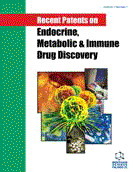Abstract
17β-Estradiol (E2), via its cognate receptors (ERs), regulates several aspects of human physiology including development, reproduction and tissue homeostasis. Consequently, E2 could also be implicated in the development or progression of several pathologies, including cancer. Two different ER subtypes are present in mammals (ERα and ERβ), which display specific roles in E2-related cancers, different tissue distribution, and multiple action mechanisms (i.e., genomic and extranuclear mechanisms). Here, the complex pattern of the relative contribution of each ER subtype in the E2- dependent cancers has been summarized by taking into consideration the molecular events which occur both in the nucleus and in extranuclear compartments. In the second part of this paper, we reviewed the current literature available on the drug-targeting of the ERs, as well as the recent literature and patents describing new and upcoming molecules. These new molecules will probably greatly improve the repertoire of anti-hormonal therapeutic strategies. However, further new drug design programs, which should include all molecular mechanisms at the basis of ER biology, are needed to expand the anti-ER treatments in new and more efficient therapeutic directions. This review also outlines relevant patents.
Keywords: Agonists, antagonists, estrogen receptor alpha, estrogen receptor beta, SERMs, cancer, genomic ER mechanisms, Extranuclear membrane-initiated ER mechanisms, Estrogen Receptor Modulator, thyroid hormone receptor, non-small cell lung cancer, Epidermal Growth Factor Receptor
 25
25





















